Divestor Asks: Is the Carbon Bubble a Form of Fraud?
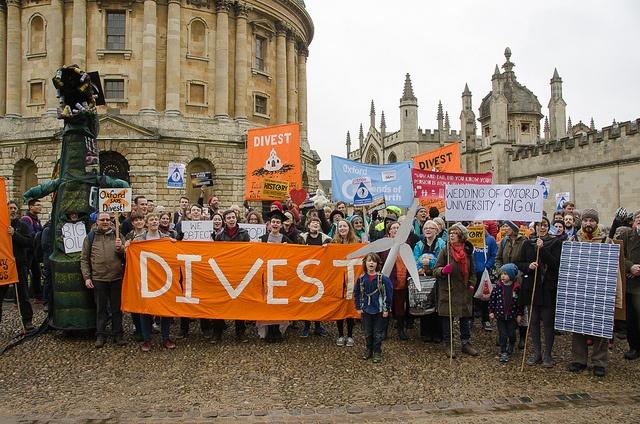

At its most basic definition, securities fraud means getting investment in a project or company via the use of false information. Although the public understands securities fraud in most industries, it may very well become a thorny issue for oil and gas companies over the long term.
Mark Campanale of the Carbon Tracker Initiative raised this point at the Intentional Endowments Network conference on divestment in Denver this week, one of the more interesting questions asked publicly about the transition to renewables.
Fraud is possibly a criminal concern on at least two angles: the possibility that oil and gas reserves can be stranded, or that the cost of getting energy out of the ground might far exceed the price you’ll get for it.
The staff of the Carbon Tracker Initiative, which Campanale founded, is focused on introducing these issues to financial regulators in the American and British markets, where most oil and gas is traded.
“When you raise that money, how is that not a form of fraudulent representation?” Campanale asked during a panel discussion focusing on the experiences and long-term strategies of divestment.
Also on stage were Ellen Dorsey, executive director of the Wallace Global Fund, as well as Tom van Dyck, vice president of SRI Wealth Management, Ira Ehrenpreis of Technology Partners, and John Powers, the founder of the Alliance for Sustainable Colorado.
Geraldine Watson, VP of finance at the Rockefeller Brothers Fund, gave an overview of the fund's ongoing divestment of its $850 million worth of assets from fossil fuels.
With 75 fund managers in attendance, it was a working conference with action plans developed to put divestment-investment in motion. The content was concentrated on the sectors that have gotten divestment going: colleges, pensions, foundations and family foundations, and faith-based institutions.
Dorsey and Watson went through the process their foundations had undertaken to move into renewables and carbon-neutral companies. Dorsey said that the team effort to accomplish this had really inspired employees in the organization.
"It really has enlivened the foundation," she said. "It's one of the most exciting things ... at the foundation."
A week ago, BizWest reported that most of the oil drillers in Northern Colorado were going into debt. Colorado's biggest driller, Anadarko (based in Texas), is now $15.1 billion in debt.
Campanale returned again to the idea of governance as a way to fund the clean energy transition (an infrastructure cost often pegged at a total of $1 trillion).
“The capital for [the clean energy transition] is closing down and selling off these companies,” Campanale said. “Why don’t we put up our own candidates to run these companies down? Why do we elect these [officers] who just want more and more?”
The divest-invest movement will probably grow as the opportunities become clearer, panelists said. “A lot of the investors who have pulled out of oil and gas have done well,” Dorsey pointed out.
Image credit: Flickr/Kamyar Adl
3 Ingenious Spring Products for Comfort and Energy Efficiency


Spring showers bring May flowers, but they can also bring allergy symptoms and erratic weather. Pollen counts in much of the Northeast and Midwest are staggering at the moment, as allergy suffers sneeze, wheeze and tear.
There are some products available that help mitigate the effects of rising pollen counts, widely fluctuating temperatures and unexpected rainfall, all while keeping the energy bills low.
1. Heat recovery ventilators
Heat recovery ventilation (HRV) systems work by bringing a constant supply of fresh air into the home and exhausting stale air out. The intake air is filtered and preheated from the exhaust air, taking out pollen and many other indoor pollutants while saving energy.“I think the HRV is what revolutionized [energy efficient] houses,” says Brian Hughes, carpenter for GO Logic, an energy efficient design build firm in Maine. “People have been building super tight insulated houses since the '50s. The problem was that the air quality wasn't good and people didn't try having a super tight building again until they realized that, with the heat exchanger, you can use a tiny bit of electricity and have really high air quality.”
The efficiency of these units has grown in recent years. Zehnder HRV systems are up to 95 percent efficient in transferring heat to the intake air from the exhaust air. Allergy sufferers can keep windows closed if necessary and rest assured that their homes are supplied with fresh, filtered spring air.
2. Tilt-and-turn windows
These windows can tilt in, using one hinge at the bottom to allow them to open at the top. This tilted position offers draft-free ventilation and rain protection and boosts safety for small children, thus allowing occupants to open windows when it might otherwise not be a good idea. In a different handle position, the window swings in on all the hinges, creating a larger opening.
These windows are already common in Europe and are gaining popularity in the United States. They are well suited for spring weather, when unexpected showers could cause rain damage in the home when typical windows are left open.
3. Solar energy systems
Although somewhat counter-intuitive, spring is often a great season for solar energy production if it isn't highly overcast. Most people expect summer solar energy production to be greater, but higher temperatures typically undermine the efficiency of solar systems. In the spring, long daylight hours and cooler temperatures create a winning formula for solar energy production, especially when cloudy weather is minimal.
A couple of solar technologies have recently grown in popularity that are boosting solar energy production. Microinverters help reduce the effect of shading on solar system output, and can boost overall system output. The company Enphase is nearly synonymous with microinverters, being the first company to successfully bring them to the market in large scale with 5 million units in the field.
Another noteworthy product is SolarEdge optimizers, which the company says can increase the output of a solar system by up to 25 percent. Like microinverters, they increase production from each individual panel by allowing them to work independently of rest of the array.
Image credit: Forest Wander, Flickr (upper photo) & Kaloyan Lozanov (lower photo)
Finding the ROI in Sustainability
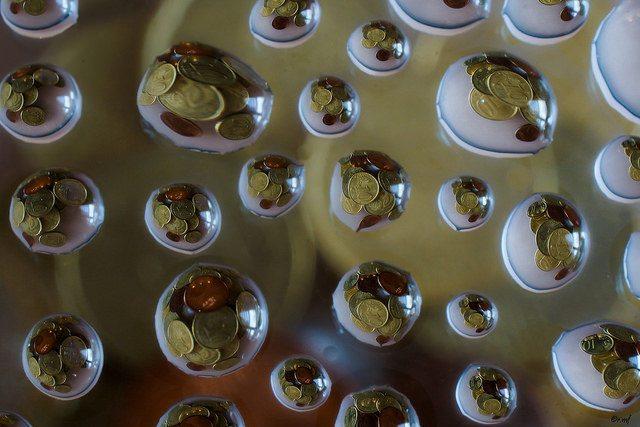

This article is part of a series on “The ROI of Sustainability,” written with the support of MeterHero. MeterHero helps companies and organizations offset their water and energy footprints through consumer engagement. To follow along with the rest of the series, click here.
Just about anyone who has worked in the area of sustainability has had to deal with the question of justifying long-term investments on a financial basis. Some measures, like fixing leaks and making efficiency improvements, pay off quickly and are therefore easy to approve. These are the proverbial low-hanging fruit. It’s when the investments take a little longer to pay off in dollars and cents that the conversation between sustainability director and CFO becomes a little more challenging.
I spoke with McGee Young, the founder of MeterHero, which helps companies cut their impact through consumer engagement, about this question of sustainability’s ROI. He agreed that not only is it a vitally important question, but it is also one that requires a bit of out-of-the-box thinking to address properly. According to Young, those sticking with a strict show-me-the-impact-on-this-year’s-bottom-line approach are working with the outdated assumption that the environment we are operating in is not about to change into one that will be far more expensive and difficult. “There is a period of instability coming that’s going to affect the weather, the availability of resources and the cost of doing business,” he said.
Operating under the wrong set of assumptions is probably the No. 1 cause of death among companies. "If your company doesn’t adapt,” says Young, “a startup will come along, and you will likely get blown out of the water, because your business processes were designed for an era of surplus. Other companies will eat your lunch. It’s really all about your ability to think beyond your current market.”
“Sustainability,” says Young, “is not just about running more efficiently or using less carbon. It’s about being able to sustain yourself in a future that's going to be defined by disruption and change.”
But taking action today will not only help to mitigate the impacts of climate change, but also make a company more resilient. There is a third benefit to taking action, says Young: “It provides a meaningful way to connect with your customers.”
Consumers today, especially among the younger crowd, are more aware than ever of who they are buying from, and they expect responsible behavior from those with whom they engage. Before long, a net-zero operation will be the price of admission. Those looking to stand out from the crowd will need to go net-negative. How does one do that?
Young says, “There are three things you can do. You can conserve. You can produce your own, and you can help other people to save.” It’s that third category that can push you beyond the new normal, and that’s where companies like MeterHero come in. After you’ve gotten your own footprint as low as you can, you can effectively make it even lower -- possibly even below zero -- by helping others reduce theirs. It’s essentially the same principle as that used in carbon offsets.
MeterHero provides a simple and straightforward means for companies and individuals to facilitate the reduction of both carbon and water footprint among a large pool of individual consumers. They do this by calculating and distributing a system of rebates, contributed by sponsors, and awarding them to those “savers” who have demonstrated meaningful reductions in their usage of both energy and water month-over-month and year-over-year. Water is becoming an increasingly important issue, not just because of flooding and drought, but also because of the large amount of energy required to pump and purify it.
MeterHero’s program is modest in this early phase, with somewhere around 2000 savers. Each is receiving an average rebate of $12 for their reduced consumption, over and above the savings they are seeing on their bills. In return, not only do the sponsors get to reduce their own footprints, but they are also building relationships with the savers. It’s an investment in the future that pays off in multiple ways. It helps reduce the overall societal footprint and improves resiliency by incentivizing not only more efficient behavior, but also the purchase of more efficient items. At the same time, it builds relationships that are based on a sponsor’s concern for the wellbeing of the planet and not just its own. That’s something that more and more consumers appreciate. In a sense, it’s a mechanism to turn long-term thinking into short-term results. That’s something that both sustainability and finance experts can understand.
There will still be those companies that will focus on throwing their weight around with regulators through lobbying and campaign contributions. But that can only postpone the consequences of operating out of sync with the planetary reality, and those consequences will only get worse the longer we ignore them. Mother Nature will not be persuaded or impressed, nor does she "play ball."
In the meantime, companies that are realigning their missions and their operations to reflect the facts of life as we now understand them will be better positioned to deal with the changes that are coming, and more trusted by those consumers that are looking for and creating the leaders of the new economy. When viewed from this perspective, the question of sustainability and its ROI becomes a strategic imperative and not just a tactic or a line item in a budget.
Image credit: Flickr/Roland M-Fà
Follow the Leader: Hawaii Aims for 100 Percent Renewable Energy


If you're looking for the perfect place to park your new Tesla Powerwall battery, Hawaii is it. The solar-friendly state has been working on a laundry list of renewable energy strategies in a coordinated effort to wean itself from fossil fuels. Last week, the state legislature upped the ante by passing a bill that calls for 100 percent renewables by 2045.
That's a pretty ambitious goal given the current state of energy consumption in Hawaii, which still relies on imported petroleum and coal. However, our friends over at Think Progress are pointing to the state's generous solar power net-metering policy, along with a generous slice of geothermal energy, as key factors that put the 100 percent goal within reach.
There several other important elements at play, too.
1. Stand up to the net-metering naysayers
Net metering refers to the ability of a solar owner to sell their solar power back to the local utility, generally in the form of credits. Net metering is a critical element for mass adoption of solar, and all but a few states have established a net-metering policy in some form. However, net metering poses a huge problem for utilities, as it can whittle away at their rate base for infrastructure upgrades and maintenance.Some utilities have adapted to this potentially disruptive business model less readily than others, and at the behest of industry stakeholders the lobbying organization ALEC has mounted an intensive state-by-state campaign to weaken net-metering policies.
States like Hawaii with strong public support for net metering have been holding off the attacks, but it's going to take a sustained effort to protect -- and improve -- net-metering policies that promote solar ownership.
2. Planning and partnerships
The public support element brings us around to another key reason for Hawaii's success. Net-metering supporters in Hawaii have a powerful advocate at their backs, the Hawaii Clean Energy Initiative (HCEI).
HCEI launched in 2008 as a statewide initiative in partnership with the U.S. Department of Energy to coordinate all stakeholders -- citizen solar advocates as well as academic, government and private-sector players -- in a concerted push to wean Hawaii from its fossil fuel dependency.
One recent example of statewide, solar-friendly policymaking engineered by HCEI is a new solar loan program for nonprofit organizations in Hawaii. Nonprofits don't qualify for solar tax credits because they pay no taxes, so the loan program will help bring this sector into the solar fold through no-money-down power purchase agreements.
HCEI was reaffirmed last year with a particular focus on cutting petroleum use in the transportation sector, which accounts for more than half of all the petroleum used in Hawaii.
To accomplish its transportation goals, HCEI look at all petroleum alternatives including natural gas and hydrogen. Under the current state of technology those two fuels are problematic, to say the least, but renewable biogas and sustainable hydrogen options are beginning to emerge.
3. Economic motivation
Hawaii is notorious for its high fossil energy costs, which far exceed the national average. That puts it at a competitive disadvantage, which is one clear motivator for transitioning out of fossil fuels.
Another economy-related factor is Hawaii's dependence on tourism. In order to protect and nurture that sector, statewide economic growth must be decoupled from a growth in fossil fuel consumption, which otherwise bears with it a growing risk to environmental quality and public health, as well as aesthetic impacts that could interfere with tourism goals.
This dynamic is also at work in other states. Upstate New York, for example, has been working out of its long-term economic doldrums by growing its tourism industry in conjunction with agriculture. In particular, the winemaking industry has become a driver in both the agricultural and tourism sectors. Unfortunately, that growth is being threatened by the recent natural gas boom. The impacts include natural gas transportation and storage issues as well as the notorious drilling practice known as fracking. Earlier this year New York Gov. Andrew M. Cuomo agreed to a statewide fracking ban, but the transportation and storage issues still linger.
4. National security
Just as the risk factor of fossil fuels is unsustainable for Hawaii's tourism sector and general economic well being, the supply factor is unsustainable for the U.S. military. Reducing dependency on fossil fuels at military facilities is a nationwide priority for the Department of Defense. It is particularly urgent in Hawaii, where the supply chain is long and costly -- and where Pearl Harbor and other important U.S. military facilities are located.
That's why a good deal of the renewable energy activity in Hawaii has been driven by Department of Defense dollars, including energy and water conservation as well as solar and biofuel investment, along with a hydrogen fuel cell vehicle initiative.
Hawaii is also the site of the nation's open-access marine energy test bed, where the Navy is partnering with private companies to develop wave energy devices.
5. One problem, many solutions
That brings us to another key factor working in Hawaii's favor: energy diversity. Hawaii's relatively small land mass makes site selection difficult (but not impossible) for utility scale solar and onshore wind turbines. But distributed, small-scale solar is taking off like a rocket, and there may be some room for micro wind turbines.
Hawaii may also get its first utility-scale offshore wind development, and the aforementioned marine energy test bed could also lead to wave energy harvesting.
Add biomass from the state's agriculture sector, along with geothermal resources, and there are many paths that Hawaii can pursue on its way to 100 percent renewable energy.
Trouble in paradise
One obstacle that Hawaii faces on its way to 100 percent renewables is its solar permitting process: Solar applications breeze through one part of the permit process, only to hit a wall when it comes to the grid connection.
Hawaii is far from alone in this regard. A couple of weeks ago, we spoke with Rob Cassetti of Accela, a software company that specializes in modernizing municipal permit processes and civic systems, and he described a similar situation facing a major U.S. city in an otherwise solar-friendly state -- applications were speeding through the building permit end of the process, only to spin their wheels for months, waiting for grid connection approval.
Like a number of other firms, Accela has been turning its attention to the solar permitting process, partly by creating a standard template that smaller cities can use as a jumping-off point.
The Obama administration is also tackling the permit process on a national basis, through the SunShot Initiative. The SunShot goal is to make solar just as cheap and accessible as any other fuel, which includes making a solar permit just as quick and easy to obtain as any other building permit, such as a new furnace installation.
Technological issues can also pose a stumbling block. The last time TriplePundit checked, the Hawaii utility HECO was working towards a solution with the microinverter company Enphase Energy, so stay tuned.
Image credit: Courtesy of Hawaii State Energy Office.
Global Cooling?


By Ryan Walker
In today’s modern world, there have been a lot of revolutionary innovations that allow us to live the way we do -- automobiles, electronics ... and air conditioning. Although cooling systems may not be widely considered by the average person, they have perhaps had the greatest influence globally on where and how humans live.
Lets dig a bit deeper.
The advent of cooling systems has resulted in widespread impacts on land use, health and economics. Urbanization and other modern land development patterns would not be possible without air conditioning, especially in those burgeoning desert locales -- think: Phoenix and Dubai. Urban areas trap hot air, creating heat islands. Air conditioning mitigates these effects, allowing higher density. Moreover, before the widespread use of cooling systems at an individual scale, residential buildings were specifically constructed so as to take advantage of weather conditions or water sources. Now, even in very hot climates, houses on a hilltop in direct sun are commonplace.
Cooling systems also have vital health impacts. For example, you have cooling systems to thank for being able to preserve perishable food. And we may be less likely to be hospitalized if we own an air conditioner.
Finally, the global economy now relies on cooling systems as an important cog to maximize efficiency in the supply chain. Climate-controlled warehouses and centers allow for mass production and storage of goods, such as maintaining the integrity of wood products. Buildings and facilities that are too hot and uninhabitable have also been shown to lead to a reduction of output by employees.
So, you can thank air conditioning for many of the luxuries we experience on a daily basis. Now you can add digital data storage to that list, because it also requires a lot of cooling.
The air conditioning and digital data pact
We all take digital data for granted as an easier storage method and one that is more environmentally friendly. We have effectively reduced the need for paper, transportation for data delivery and material items by replacing them with bytes. While that holds true, digital storage requires large inputs of resources, primarily electricity and water. One reason: data centers.But isn’t all of our data up in the “cloud”? Well yes, but all of that data still has to be stored somewhere physically, creating a need for digital data storage and centralized IT operations facilities -- otherwise known as data centers. According to SAP, data centers are the “brain of the company." Everything from digital documents, to videos and photos, to Facebook posts are stored somewhere, and that place could be anywhere on the planet. It could be an office server or an enormous industrial warehouse.
Think about your computer for a moment. Not a tablet but one with a hard drive. Does it get warm? The answer should be yes. You are instructed in the fine print to store the computer in a cool location. Now if you work in an office setting and have a server, consider where it is located. Typically, servers are located in a room that is kept at a much cooler temperature. Now multiply your home or office data storage needs by millions or even billions of other people. The amount of storage needed is staggering.
Using water to post to the cloud
So, we’ve established that there is tons of data out there that is stored in various-sized data centers. Data centers can be huge, in some cases more than 100,000 square feet of hot machines, and require a lot of cooling power. What do all these systems need to operate their cooling systems? You guessed it: water!In addition to electricity, of which cooling consumes about a third of the energy at a typical data center, the amount of water used by such facilities is staggering. Amazon indicates that a 15-megawatt center (large, but not atypical) may use up to 360,000 gallons of water a day, almost entirely to supply chillers. The NSA Security Center, of over 1 million square feet, in Utah requires up to 1.7 million gallons of water a day. In terms of water resource depletion, data centers are a huge consumer. As more and more individuals, governments and businesses rely on off-site data storage for day-to-day activities, we need more machines in enormous facilities to store it.
The lesson here is that no resource is free. It seems that many people believe there to be very little resource use tied to technology, aside from the electronic device itself. As we can see with data centers, that could not be further from the truth. While going back to non-electronic storage is not the solution, we should consider that any material use requires some input of natural resources. Therefore, the ability for data centers to reduce water use will be critical to water conservation.
Data centers: A key to water conservation
As fresh water becomes scarcer around the globe, conservation becomes more important. Sustainability is predicated on the availability of water, and the results will be dire if we cannot protect this resource. So, how do we answer this water-usage dilemma?The first step is probably to pinpoint areas that would be better suited to supporting the center’s needs. Several of the largest data centers are located in one of the drier developed areas of the world – the American Southwest. The largest single collection of data centers in the world, with ongoing expansion, is currently situated in Las Vegas and operated by the Switch Co. And another of the largest centers in the world is located in Phoenix. A real head scratcher, right?
Another focus area should be on the numerous innovative trends in production efficiency. In Quincy, Washington, Microsoft has constructed a water treatment plant at its data center site, which will facilitate water reuse. The plant takes non-potable water and uses it in the data center before returning it to the local aquifer and municipal system. Millions of gallons of water may be saved.
In a similar effort, Google has constructed a water treatment plant at its data center near Atlanta, which takes greywater, treats it for use in the data center and returns it to the nearby river. Google is also working to reduce water usage in its data centers through “free-cooling” techniques. That is, facilities are cooled by systems utilizing outside air or other methods to take advantage of local climate conditions when possible.
At Facebook’s data center in Prineville, Oregon, the company is exercising several methods to reduce water use, including working with local municipalities, using grey water and capturing water droplets that would otherwise evaporate. Perhaps most importantly, Facebook has posted an online dashboard displaying water efficiency for all to see and other data centers to benchmark against.
Yet another organization using new technologies is the NCAR-Wyoming Supercomputing Center (NWSC) located in Cheyenne, Wyoming, which reduces water use through the design of its cooling towers as well as site landscaping, such as native species planting. The center houses data related to earth science and was named “Green” Data Center of the Year in 2013 by Datacenter Dynamics.
These few examples point to a flourishing mass of “green” data centers developing in response to resource conservation needs. At the end of the day, the luxury of digital data and storage provides a lot of value to people as well as the environment. For one, the need for paper or other types of data storage is reduced. Also, digital data can be stored in a much smaller footprint. The convenience of electronic access to data is undeniable, and the wealth of shared information internationally available is a tremendous asset. Overall, digital data storage is a positive feature to sustaining our planet, so long as risks such as water usage can be kept in check.
The current innovations are only the beginning. Businesses see the value in reducing long-term cost while protecting source water (i.e. risk management) and the environment. The building blocks are there for sustainability in the data storage industry. There are promising innovations out there and more coming along every day. Let's hope that path persists and other industries continue the trend to support solutions for water’s sake.
Image credit: 1) Mentora 2) Flickr/Intel Free Press
Ryan Walker is a degree candidate in the Executive Master of Natural Resources (XMNR) program at Virginia Tech, expecting to graduate in May 2015. He currently works for a non-profit land trust, helping to conserve land through acquisition and easement as well as assisting municipalities in land planning for open space preservation, trails, and conservation development.
Disadvantaged Fresno Neighborhood Gets Rooftop Solar
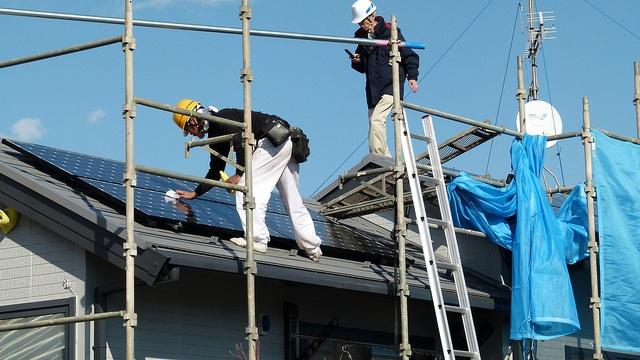

One thing the central Californian city of Fresno has is plenty of sunshine. All of those hot, summer days where the thermometer climbs over 100 degrees will be put to use in one of the city’s disadvantaged neighborhoods -- think: rooftop solar panels.
A rooftop solar panel installation on a home in Fresno’s Roosevelt neighborhood is just one of the first funded by California’s cap-and-trade program. The program has $832 million earmarked for energy efficiency, public transit, affordable housing and other projects that reduce greenhouse gas emissions. At least 25 percent of the funds are required to be invested in the state’s most disadvantaged communities, such as Fresno’s Roosevelt neighborhood.
The rooftop solar installation project in Fresno is part of the Low Income Weatherization Program (LIWP), which is administered by the California Department of Community Services and Development. The project is funded with $75 million to install rooftop solar panels, solar hot water heater systems and weatherization measures.
An estimated 1,780 low-income houses across the state are slated to have solar panel systems installed on their roofs through the LIWP program, which will generate about 5.5 megawatts of energy.
Fresno is not the only San Joaquin Valley city that is expected to receive rooftop solar panels in disadvantaged communities. In addition to Fresno, Merced, Madera and Tulare counties are also expected to be part of the project. The Community Services Department contracted with the Fresno Economic Opportunities Commission, which is partnering with SunPower to install the solar panels in the San Joaquin Valley.
“These investments will help power a brighter, healthier, and more prosperous future for Fresno and for cities like it across California,” said Senate President pro Tempore Kevin de León in a statement. “SB 535 ensures that our most disproportionately impacted communities see the cost savings, job creation, and environmental benefits of clean energy policies.”
The San Joaquin Valley has some of the worst air and economic conditions in the nation
The eight-county region of the San Joaquin Valley is home to over 3 million people, or about 10 percent of California’s population. Though largely rural, the valley also has its fair share of cities and towns. It is expected to be the fastest growing region of the state, with a growth rate 65 percent higher than the state average projected through 2030.
The valley is also a region that is behind the rest of the state in most socioeconomic and environmental indicators, according to the University of California, Merced’s Center of Excellence on Health Disparities. It has some of the worst air quality and highest poverty rates in the state, and even the nation. For the past two years, every major valley city is listed in the American Lung Association’s State of the Air report as having the highest ozone or particle pollution.
Solar rooftop installations in disadvantaged communities not only benefits the valley economically, but will also help clear the region’s poor air quality. It’s a proverbial win-win situation for the area that is considered to be the agriculture center of the world.
Image credit: Flickr/CoCreatr
Imperfect Foods Wants You to Buy Ugly Fruits and Vegetables
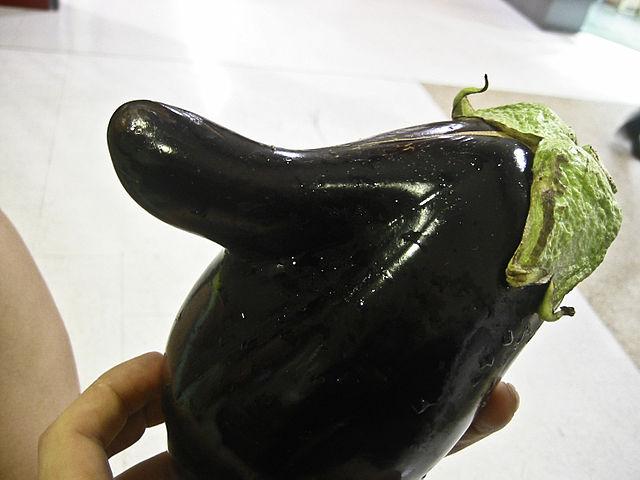

For those of us who are or have indulged in gardening, misshapen fruits and vegetables can be one of the joys of spending your spring and summer in the yard while growing your own food. But as a society, something gets lost in translation when we go to the local supermarket or warehouse store: We expect our fruits and vegetables to be uniform in color, size and texture. Even Whole Foods, which purports to be the “sustainable” and “community” grocery store across the U.S., offers no produce lacking a uniform appearance, unless you count the heirloom tomatoes sold at $7 a pound.
To that end, the Oakland, California, startup Imperfect Foods is trying to change attitudes toward funny-looking fruits and vegetables while increasing waste diversion.
Efforts like those of Imperfect Foods are important because food waste is an ongoing problem in the United States and most countries across the world. Even with a celebrity such as Jamie Oliver leading a “crooked carrots” campaign, changing minds has been a tough sell. The nonprofit Feeding America estimates that, of the 70 billion pounds (31.8 billion kilos) of good, safe food that is wasted across the U.S., 6 billion pounds are fresh fruits and vegetables.
Granted, the aforementioned charity had success in diverting almost 1 billion pounds of that produce last year, but there is plenty of room for improvement. Imperfect Foods is taking a compelling, though risky, approach toward tackling the beautification of ugly produce: The company aims to launch a delivery service that will send 10 to 15 pounds of these misshapen fruits and vegetables to future customers on a weekly basis.
Think of Imperfect Foods as the doppelgänger to your neighborhood community CSA (community supported agriculture). What is now a company of three people says it will start the service this summer in Berkeley and Oakland. The company says it will work with farmers across California to source these foods and then sell them to future customers at about a 30 percent discount compared to supermarket prices.
Imperfect Foods already surpassed its goal of raising $35,000 in a crowdfunding campaign that expired over the weekend. Those funds will go toward leasing a refrigerated warehouse to store the produce and pay for the salaries of sales and delivery teams.
The current team behind Imperfect Foods has a solid track record. Ben Simon and Ben Chesler started the Food Recovery Network in 2011, which diverts 700,000 pounds of food from college campuses that would otherwise have ended up in landfills. Ron Clark has worked with California food banks for 15 years and is experienced in sourcing misshapen produce. They will face challenges: reliable sources of this misshapen fruit; bias amongst consumers who hold on to the fallacy that “organic” is healthier than “conventional”; and of course those ingrained beliefs that funny-looking fruits and veggies are not as good as their perfectly-shaped cousins.
Nevertheless, Imperfect Foods could be the start of changing hearts and minds. The amount of food waste across the world is absurd, especially considering the ongoing drought in California. Some supermarket chains in Canada, the United Kingdom and France launched campaigns highlighting the virtues of ugly fruits and vegetables, but overall retailers have far more to do to educate their customers. This startup could be onto something, and may start changing attitudes we have toward the fruit and vegetables food group at a grassroots level.
Image credit: Jason Ruck
Oregon's Climate Control Legacy


By Matthew Baird
I have always maintained a permanent residence in Oregon, yet was surprised to learn a few years ago that the state was the first in the nation to adopt legislation to curb carbon dioxide emissions— the Oregon Carbon Dioxide Standard — in 1997.
As a native Oregonian, I naturally felt some pride at being associated with the early adoption of climate mitigation legislation, and rightfully so, considering the positive impacts and catalyzing effect this legislation has had across the country.
While the standard’s climate impact has not kept pace with the growing need for carbon finance, there are several climate solution opportunities on the horizon with potential to bring Oregon to the forefront of climate action once more.
A model that works
The Oregon Carbon Dioxide Standard was signed into law in 1997 with little opposition. Previous tests demonstrated that the competitive electricity market could afford to internalize some CO2 controls, that mitigation measures were practicable, and that these measures provided local economic development benefits.
The standard set a limit on new fossil fuel power facilities, but is flexible in how they may meet the new obligation. Facilities may elect to offset the emissions onsite, directly manage a portfolio of offset projects, or provide funds to a state-recognized nonprofits to manage the portfolio of offset projects for them. While all Oregon utilities have elected to fund the Climate Trust, the flexibility of the law helps attain utility buy-in as one size does not fit all.
The standard has maintained its relevance over the years as new power plants must reduce their emissions to be 17 percent below the best existing gas-combustion plant in the U.S. Thus, as technology changes, the CO2 target changes with it. Over the lifetime of the standard nearly 1.4 million metric tons of CO2 offsets have been retired on behalf of Oregon as of the end of last year. This is no small feat, and Oregonians should be proud.
Building on the Oregon standard
As well as the model works, the Oregon Carbon Dioxide Standard’s climate impact is not sufficient to counteracting the state’s footprint. The price per short ton (current carbon markets use metric tons) was initially only 57 cents. While the price per ton rose to $1.27 or $1.40 per metric ton for the most recent power plant addition in 2014; this increase has not kept pace with market prices for quality offsets.
For example, the cheapest California Carbon Offset now sits above $9 per metric ton. And while California is the domestic leader in the fight against climate change, some research indicates their pricing may not be high enough. The social cost of carbon, which accounts for the full economic impacts of CO2, has been estimated to be anywhere from $37 to $220 per ton emitted in 2015. The World Economic Forum estimates $5.7 trillion will need to be invested annually in climate mitigation between now and 2020 to avoid the worst impacts of climate change.
Oregon will not be able to offset its own climate impact simply charging Oregon utilities $1.40 a ton given the investment needed over the next few years, but the state has several opportunities Oregonians can get excited about.
Changes ahead in Oregon
Oregon House Bill 3250 and 3252 both attempt to put a price on carbon pollution and are currently in the House Committee on Energy and Environment. HB 3250 is a carbon tax and dividend program that redistributes the funds to citizens. HB 3252 places a $60 per ton fee that would be reinvested in jobs, equity and low-carbon transportation infrastructure. While both of these proposals are improvements over business-as-usual, and are appealing in their simplicity, the bill to watch is House Bill 3470.House Bill 3470 passed out of the House Committee on Energy and Environment to the Committee on Rules on April 21. The bill, also called the Climate Stability and Justice Act, requires enforcement of Oregon’s climate goals (HB 3542 from 2007) and requires the Environmental Quality Commission to create a compliance plan by 2018. This requirement may also help Oregon in the current lawsuit concerned with its failure to meet the state’s climate goals.
The Climate Stability and Justice Act includes a requirement to cooperate with other governments (all the way up to the federal level) to strategically integrate greenhouse gas reductions. Given California’s existing carbon market and Washington state’s carbon offset bills currently working their way through the legislature, the act presents unique opportunities to efficiently implement a climate mitigation strategy for the region. Furthermore, the act would identify all state laws and programs related to greenhouse gas emissions and adjust them to fit within the Environmental Quality Commission’s plan. This means the Climate Stability and Justice Act would address the existing Oregon Carbon Dioxide Standard, allowing for some needed updates, and ensure that Oregon will not be double-billed for carbon pollution.
The act will also direct investment to disadvantaged communities -- providing opportunities for beneficial participation by small businesses, schools and other community-based institutions. History has shown that society’s environmental impacts are not evenly distributed across socioeconomic classes, and the legislation will seek to help remedy such imbalances.
The Climate Stability and Justice Act opens the door to market-based declining emission limits for sources -- in other words, cap-and-trade. While other options, like the proposed carbon tax house bill, certainly make carbon pollution more expensive, the Climate Trust has examined existing domestic cap-and-trade programs, such as California’s system, and found them to be successful at capping emissions, providing funds to those who need it and still growing the economy.
Oregon as an early adopter
The state of Oregon may be a small part of the global community, but we have a responsibility to take action to mitigate our own impacts. Oregon was on the leading edge of domestic climate policy in the late '90s, but has not kept pace; the state admitted failure on its own climate impact goals established in 2007.
There are several Oregon bills that would bring the state back to the forefront of climate action, but House Bill 3470 has the best chance to yield the greatest results on multiple fronts. Not only does the bill increase the price of carbon pollution, but it also ensures that Oregon meets its climate goals, requires collaboration with other agencies, provides funding to those who need it most and is able to put a measurable cap on carbon pollution.
While much of the rhetoric on climate change has been gloomy, the Climate Stability and Justice Act presents an exciting opportunity for Oregonians to build on existing climate solutions and continue leading the nation in the fight against climate change.
Image credit: Flickr/Paul Nelson
Matthew Baird is the Program Coordinator for The Climate Trust
Can Mobile Gaming Help Save the Planet?


By Jessica Oaks
It may seem a touch hyperbolic to say that mobile apps and video games can have any impact on the environment, but in fact, that is the very goal of numerous apps now available for iOS, Android and Windows devices. The idea is simple: Through gamification, an app can promote sustainability, recycling and other green initiatives.
Just like exercise, healthy eating and doing your taxes on time, recycling, driving less and reducing your carbon footprint tend to be things that you know you should do, but for whatever reason never make the time for. Apps like Recyclebank aim to change that, by making actions that have traditionally been seen as burdensome fun.
The tools to promote recycling are here
Everyone can agree that recycling, reducing and reusing are sound principles that can have a positive impact on the world around us. The less that we consume, the less resources need to be harvested and produced, which has the side effect of reducing strain on the natural environment. And yet, so many people fail to take proper steps, even when they recognize their benefit. Gamification provides incentive by making recycling, reducing and reusing fun and competitive. And gamification is made possible through the advent of mobile technology.
Thanks to continually advancing mobile technology like the Snapdragon mobile processor, today's tablets and smartphones are more capable than ever. Though many people use their devices almost exclusively for checking in on Facebook and posting photos to Instagram, it's easy to forget that these devices are actually quite robust and are capable of running a wide variety of applications. These applications include project management tools, social tools, games and, yes, even tools that help people and companies go green. It's simply a matter of using them. The Internet of things and the mobile device has opened up the world to a range of new possibilities.
But does it work?
Well, it certainly can. As with many initiatives, it's more about participation than whether or not the capability exists. But green applications and gamification tools are starting to have an impact on the world around us. Greenbean Recycle, a small recycling startup primarily located on college campuses, has claimed to have recycled more than 12,000 pounds of glass and plastic bottles through the use of its recycling vending machines. Considering the company's somewhat small footprint, this is no small feat. Users are incentivized not only through easily accessible and convenient recycling machines, but also points that can be redeemed for actual goods at participating retailers.
And then there is Opower, an energy software company that provides utility data to customers not only for their homes, but the homes of their neighbors and community as well. Though revenue has slowed as of late, the company got off to a good start, helping consumers save more than 2 terawatt hours of energy for a total savings of approximately $200 million in energy bills. Through gamification and data reports, Opower was able to get consumers to save enough electricity to power 200,000 homes. Obviously, the more people participate in a program, the more of an impact it can have, but when one looks at the numbers, it's hard not to admit that these apps can make a difference.
Is gamification the future of recycling?
As the number of consumer products manufactured each year continues to grow, and the consumer marketplace gets ever larger, recycling initiatives will become more and more important. Gamification tools and recycling programs may not be the sole answer to the problem of global warming, which poses a real and immediate threat, but they can make a difference. Through environmental initiatives, it may be possible to halt the rising tide.
Jessica Oaks is a freelance journalist who loves to cover technology news and the ways that technology makes life easier. She also blogs at FreshlyTechy.com. Check her out on Twitter @TechyJessy.
3p Weekend: 3 Health Innovation Lessons from an Unlikely Source
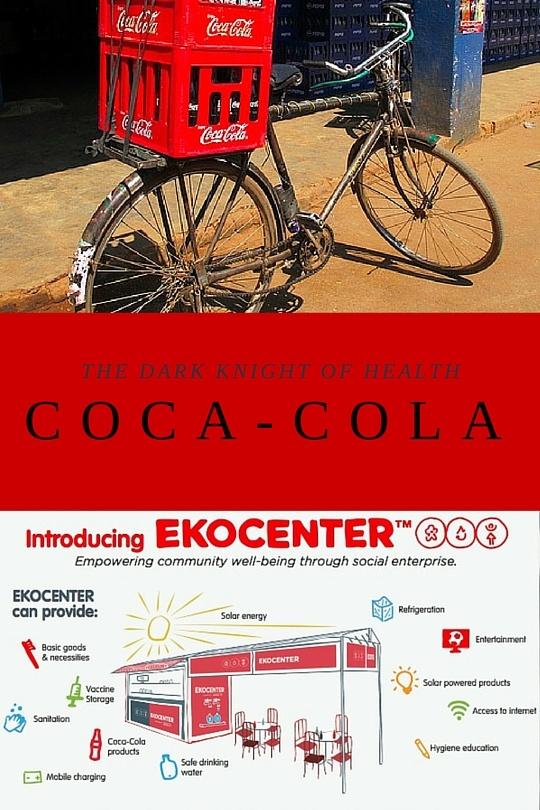

With a busy week behind you and the weekend within reach, there’s no shame in taking things a bit easy on Friday afternoon. With this in mind, every Friday TriplePundit will give you a fun, easy read on a topic you care about. So, take a break from those endless email threads and spend five minutes catching up on the latest trends in sustainability and business.
Health is not the first thing to come to mind when you hear the name Coca-Cola. Given the company's role in our nation’s obesity debate, you may be surprised that the world’s biggest seller of sugar-water is behind innovative programs that support health and wellness around the globe.
Indeed, the company’s use of its massive supply chain network to bring health remedies, such as medication and safe drinking water, to developing countries provides valuable lessons for any organization wishing to leave short-termism behind and use its resources for good.
1. Open-source your supply chain
The Coca-Cola Co. sells about 1.8 billion servings a day of its more than 500 beverage brands in more than 200 countries. It has the world’s largest beverage distribution system, and reaches parts of the world that other networks can’t touch. In some rural areas, you may be more likely to find a Coca-Cola bottle than a bottle of penicillin.
Enter ColaLife. This independent nonprofit organization, run and staffed by volunteers (not by Coca-Cola), works with companies like Coca-Cola to fit its “aidpods” – packaged rehydration salts and Zinc – within crates of soft drink bottles being delivered to areas that don’t have well-stocked health centers. The nonprofit leverages Coca-Cola crates to deliver essential medicine to places where 1 in 9 children die before their fifth birthday from simple preventable causes like dehydration from diarrhea.
By participating in this effort, Coca-Cola is advancing the greater goal of reducing child mortality in developing countries.
2. Tap your resources to create impact
The main ingredient in Coca-Cola is water. And the lack of water, sanitation and hygiene is one of the greatest challenges to poverty alleviation and economic growth in developing nations. Astoundingly, more people die from contaminated water than from all forms of violence combined, including wars.
Coca-Cola's Replenish Africa Initiative (RAIN) aims to address those massive issues by improving access to clean water for 2 million people in Africa by the end of this year. As part of this six-year, $30 million commitment by Coca-Cola, its foundation has partnered with governments and civil society to promote sanitation and hygiene, watershed protection, and productive use of water.
The project has brought safe drinking water to more than 800,000 people to date.
3. It really does take a village
What do you get when you put together a solar-powered, pseudo-community center that provides access to safe drinking water, Wi-Fi and also happens to sell soda? That would be Coca-Cola’s EKOCENTER – an innovation the company calls a “downtown in a box” that offers “a locally tailored mix of products, services and resources that may include safe drinking water, sustainable energy, wireless communications, refrigerated vaccination storage, health education, and other functionality to jump-start entrepreneurship opportunities and community development.”
Launched in 2013, the project aims to provide safe drinking water while offering employment opportunities to women and entrepreneurs in rural parts of Africa, Asia, Latin American and North America. The centers also provide a safe gathering place for communities and a place to recycle and receive sanitation services where there otherwise would be none.
Though some have called the effort a glorified concession stand, the centers represents what big-thinking and big-scale collaboration can create. EKOCENTERs are the product of "golden triangle" collaboration between business, government and civil society and a unique cross-sector partnership between companies as diverse as Coca-Cola, Deka R&D, IBM, NRG, Qualcomm Technologies and UPS – with each providing distinct resources to build the centers.
While Coca-Cola will likely never be the poster child for health, the company is using its vast resources to address global health issues – in its own way – and attempting to create shared value in the process. That, at least, is something to feel a little happy about.
Image credits: 1) and 2) ColaLife 3) EKOCENTER